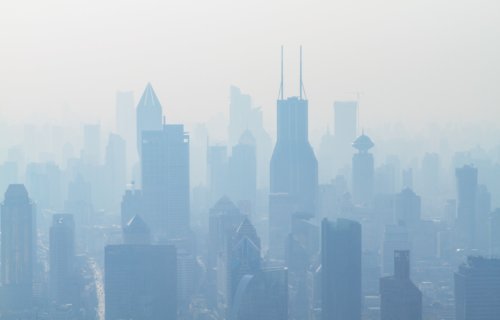LONDON — A new study warns that the risk of going blind is higher for people who live in areas of high pollution. According to the findings, damage to people’s eyes by air pollution could lead to progressive and irreversible sight loss known as age related macular degeneration, or AMD.
AMD is the number one cause of blindness in high-income countries like the U.S., and is expected to affect more than 300 million people worldwide by 2040. According to previous research, a person’s age, genetic makeup and whether they smoke, increases the chances of developing the disease. Although air pollution has been linked to a number of cardiovascular diseases, it was not considered a blinding factor until now.
“Overall, our findings suggest that ambient air pollution, especially fine particulate matter or those of combustion-related particles, may affect AMD risk. If these findings are confirmed, they could pave the way for new treatment options,” the study explains.
AMD develops when the retina, a thin layer of tissue at the back of the eye, is worn down. Researchers analyzed data from part of the UK Biobank Study which included 115,954 people aged between 40 and 69. None of the participants had eye problems upon signing up in 2006. After the study began, participants were asked to report if they were formally diagnosed with AMD by a doctor.
Retinal images from 52,602 people, for whom complete data was available in 2009 and 2012, was also examined. Particularly, changes in the retina’s thickness and number of light receptors were assessed by the researchers. Just over 1% of participants (1,286) were diagnosed with AMD during the study period.
Air pollution levels at participants’ home addresses were then calculated using official information on traffic, land use and topography. This included the number of small particles in the air, known as fine particulate matter (PM2.5), nitrogen dioxide, and nitrogen oxides. Researchers found that people who lived in places with higher PM2.5 levels were 8% more likely to be diagnosed with AMD.
In areas where other pollutants were high, participants’ retina structure changed significantly more. “It is possible that the structural features observed may be unrelated to AMD, but associated with pollution-induced retinal toxicity. However, the direction of the relationships between air pollution and both AMD and associated retinal layer thicknesses indicates higher exposure to air pollution and may make the cells more vulnerable and increase the risk of AMD,” the authors write.
Researchers say understanding what causes AMD could lead to better treatments in the future. “Our findings add to the growing evidence of the damaging effects of ambient air pollution, even in the setting of relatively low exposure. If they are replicated, this would support the view that air pollution is an important modifiable risk factor for AMD,” Dr. Foster added.
This study is published in the British Medical Journal.
SWNS writer Tom Campbell contributed to this report.
